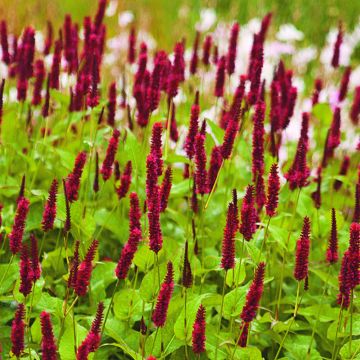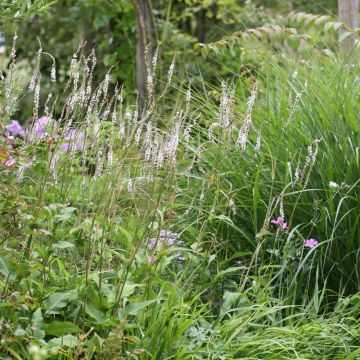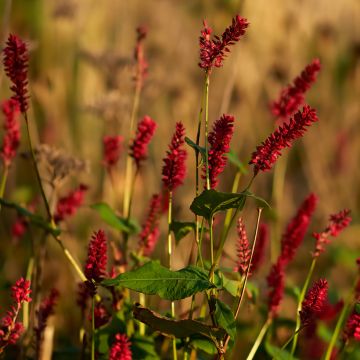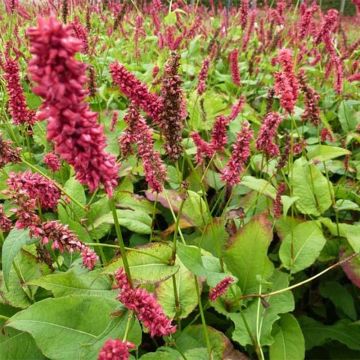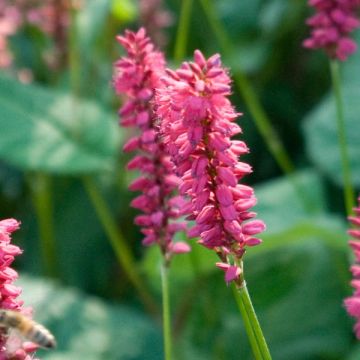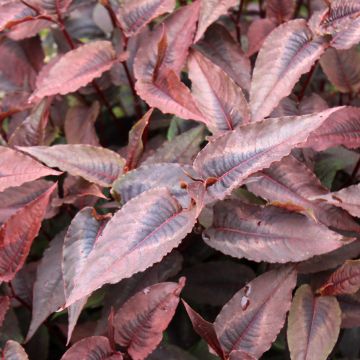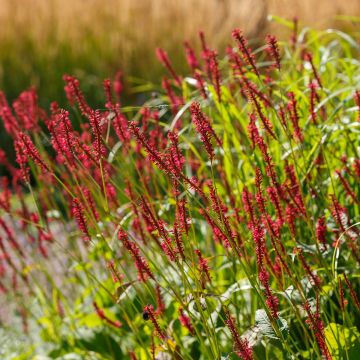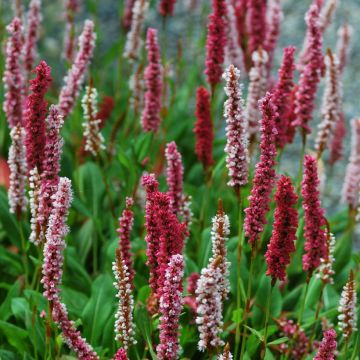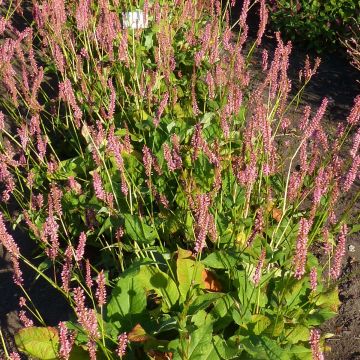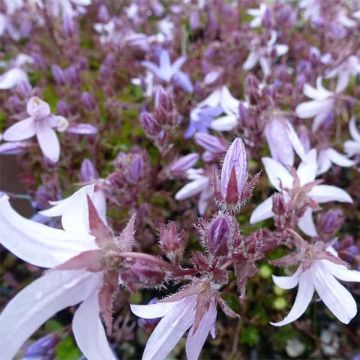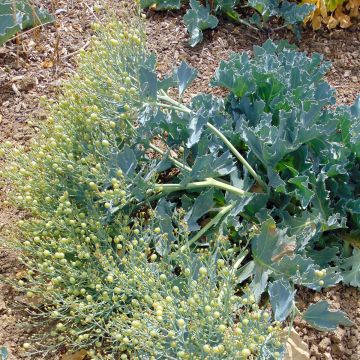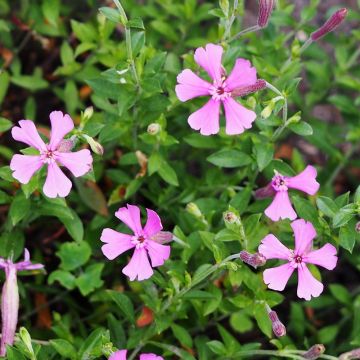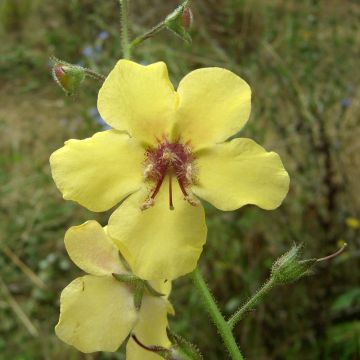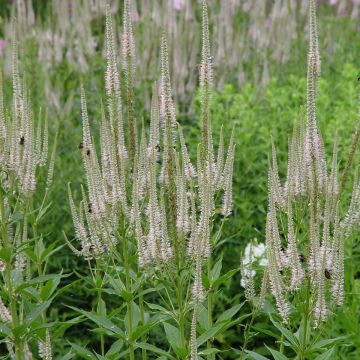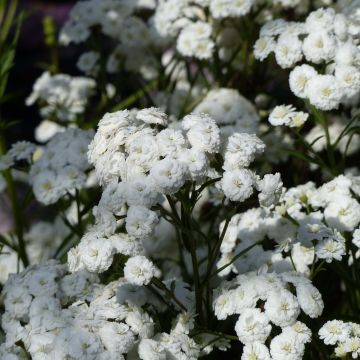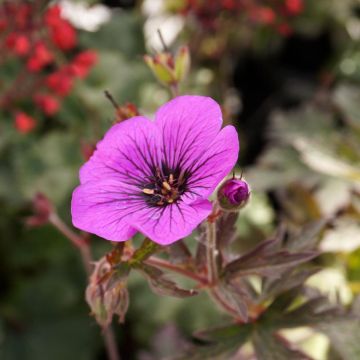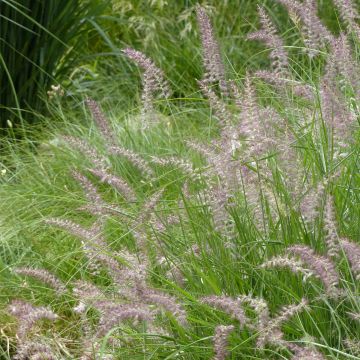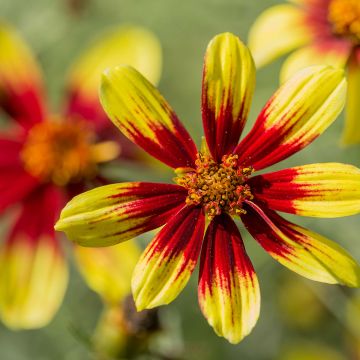

Persicaria amplexicaulis White Eastfield - Mountain Fleece
Persicaria amplexicaulis White Eastfield
Red Bistort, Mountain Fleece
Order received very quickly and in perfect condition. Planted on the day of receipt and already well established, several leaves have come to fill out the tiller.
Marie, 28/03/2023
This item cannot be shipped to the selected country
Delivery charge from €5.90
More information
Schedule delivery date,
and select date in basket
This plant carries a 12 months recovery warranty
More information
We guarantee the quality of our plants for a full growing cycle, and will replace at our expense any plant that fails to recover under normal climatic and planting conditions.
From €5.90 for pickup delivery and €6.90 for home delivery
Express home delivery from €8.90.

Does this plant fit my garden?
Set up your Plantfit profile →
Description
The White Eastfield Stem-Clasping Persicaria amplexicaulis is a recent variety of knotweed, notable for the abundance and lightness of its constantly renewed white flower spikes until October. Its vegetation, composed of dark stems and narrow leaves of a fairly deep green, forms an airy ground cover that integrates well into a naturalistic garden, reminiscent of tall grasses. It is also a very hardy perennial that adapts to any good garden soil that retains moisture. Its white and graceful spikes are also very beautiful in bouquets.
The White Eastfield Persicaria or Polygonum amplexicaule is a plant in the Polygonaceae family. It is a recent horticultural selection, attributed to Chris Ghyselen, a Belgian landscaper passionate about persicaria. It is derived from a botanical species native to the Himalayas. This rhizomatous and semi-evergreen perennial plant forms a flowering clump of 90cm (35in) in height. It spreads rather slowly, depending on the richness of the soil, and can form imposing clumps after several years. Particularly floriferous, even more so than the 'Alba' form, this 'White Eastfield' knotweed produces numerous very slender spikes, 10 to 15 cm (4 to 6in) long, composed of a multitude of small ivory-white flowers in buds, becoming pure white when they open, with a throat filled with slightly prominent stamens, at the axil of the leaves located at the end of brown stems. The flowering is continuous from July to October, if the soil does not dry out too much. The leaves, borne by sturdy stems, are narrow and lanceolate, measuring 17 cm (7in) long, clasping, dark green, villous on the underside, and turn purplish in autumn.
Very trendy, this lightweight knotweed fits well in contemporary gardens as well as in more wild settings and forms beautiful autumn scenes with grasses like Miscanthus and Panicum. Thanks to its mat-forming habit, it can be used as a ground cover, making sure to leave enough space for it. This knotweed enjoys both sun and partial shade. It likes rich and heavy, even very moist soils and can be cultivated independently on sunny pond banks, along a sunken path, or in a cool and partially shaded understory at the base of trees. Asters, Japanese anemones, and inulas are good companions for persicaria, both in the garden and in bouquets, as they also flower until autumn.
Report an error about the product description
Persicaria amplexicaulis White Eastfield - Mountain Fleece in pictures
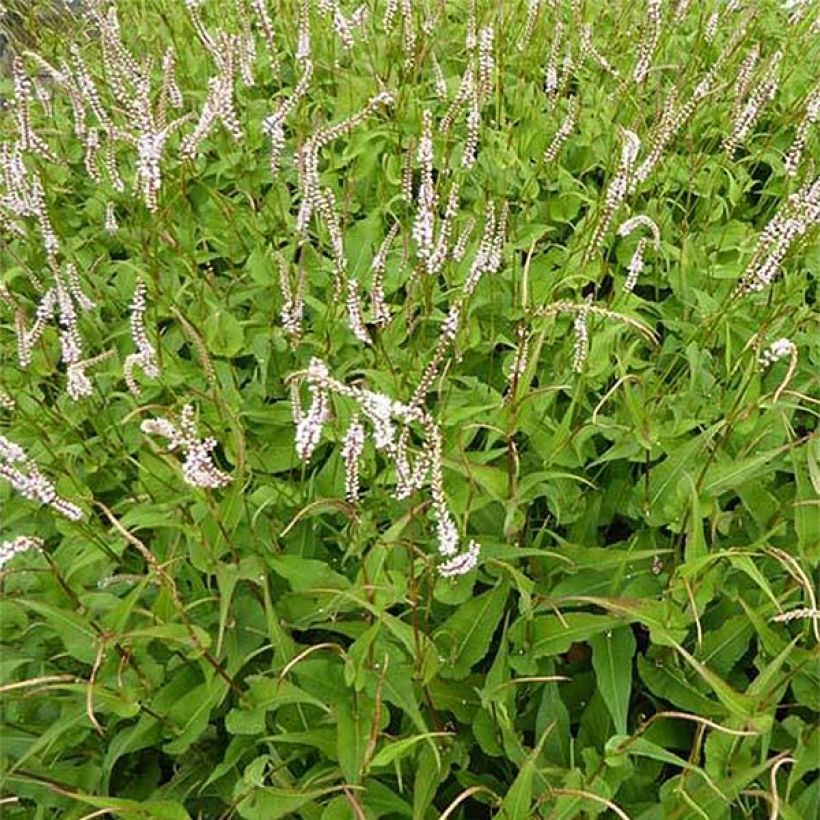

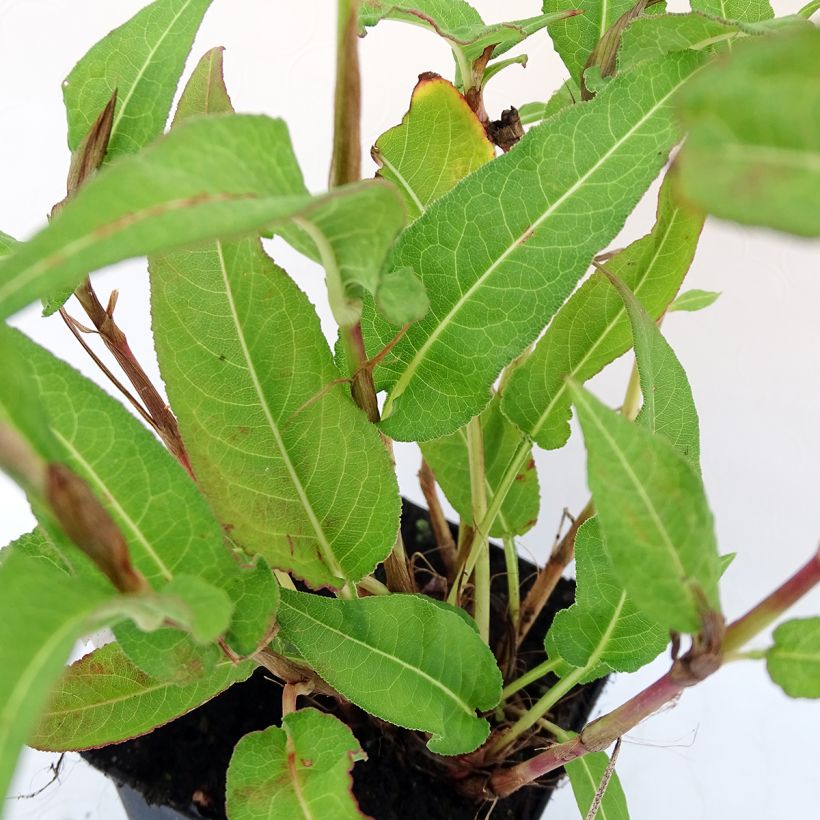

Flowering
Foliage
Plant habit
Botanical data
Persicaria
amplexicaulis
White Eastfield
Polygonaceae
Red Bistort, Mountain Fleece
Cultivar or hybrid
Other Persicaria
Planting and care
The 'White Eastfield' Persicaria amplexicaulis thrives in sunny or semi-shaded exposure. It is a very easy plant to grow, it even tolerates a moderate period of drought if the soil it receives is deep. Plant it in any type of soil, as long as it is fresh, clayey or humiferous, even marshy, in spring or autumn, in groups to create a mass effect. Enrich the soil with organic fertilizer at the start of vegetation, as it is a voracious plant. Control its growth so that it does not harm neighboring plants. Mulch the soil in June in regions where the summer is hot and dry. Divide the clumps in October every three years and replant the plants in another part of the garden.
Planting period
Intended location
Care
-
, onOrder confirmed
Reply from on Promesse de fleurs
Summer flowering perennials
Haven't found what you were looking for?
Hardiness is the lowest winter temperature a plant can endure without suffering serious damage or even dying. However, hardiness is affected by location (a sheltered area, such as a patio), protection (winter cover) and soil type (hardiness is improved by well-drained soil).

Photo Sharing Terms & Conditions
In order to encourage gardeners to interact and share their experiences, Promesse de fleurs offers various media enabling content to be uploaded onto its Site - in particular via the ‘Photo sharing’ module.
The User agrees to refrain from:
- Posting any content that is illegal, prejudicial, insulting, racist, inciteful to hatred, revisionist, contrary to public decency, that infringes on privacy or on the privacy rights of third parties, in particular the publicity rights of persons and goods, intellectual property rights, or the right to privacy.
- Submitting content on behalf of a third party;
- Impersonate the identity of a third party and/or publish any personal information about a third party;
In general, the User undertakes to refrain from any unethical behaviour.
All Content (in particular text, comments, files, images, photos, videos, creative works, etc.), which may be subject to property or intellectual property rights, image or other private rights, shall remain the property of the User, subject to the limited rights granted by the terms of the licence granted by Promesse de fleurs as stated below. Users are at liberty to publish or not to publish such Content on the Site, notably via the ‘Photo Sharing’ facility, and accept that this Content shall be made public and freely accessible, notably on the Internet.
Users further acknowledge, undertake to have ,and guarantee that they hold all necessary rights and permissions to publish such material on the Site, in particular with regard to the legislation in force pertaining to any privacy, property, intellectual property, image, or contractual rights, or rights of any other nature. By publishing such Content on the Site, Users acknowledge accepting full liability as publishers of the Content within the meaning of the law, and grant Promesse de fleurs, free of charge, an inclusive, worldwide licence for the said Content for the entire duration of its publication, including all reproduction, representation, up/downloading, displaying, performing, transmission, and storage rights.
Users also grant permission for their name to be linked to the Content and accept that this link may not always be made available.
By engaging in posting material, Users consent to their Content becoming automatically accessible on the Internet, in particular on other sites and/or blogs and/or web pages of the Promesse de fleurs site, including in particular social pages and the Promesse de fleurs catalogue.
Users may secure the removal of entrusted content free of charge by issuing a simple request via our contact form.
The flowering period indicated on our website applies to countries and regions located in USDA zone 8 (France, the United Kingdom, Ireland, the Netherlands, etc.)
It will vary according to where you live:
- In zones 9 to 10 (Italy, Spain, Greece, etc.), flowering will occur about 2 to 4 weeks earlier.
- In zones 6 to 7 (Germany, Poland, Slovenia, and lower mountainous regions), flowering will be delayed by 2 to 3 weeks.
- In zone 5 (Central Europe, Scandinavia), blooming will be delayed by 3 to 5 weeks.
In temperate climates, pruning of spring-flowering shrubs (forsythia, spireas, etc.) should be done just after flowering.
Pruning of summer-flowering shrubs (Indian Lilac, Perovskia, etc.) can be done in winter or spring.
In cold regions as well as with frost-sensitive plants, avoid pruning too early when severe frosts may still occur.
The planting period indicated on our website applies to countries and regions located in USDA zone 8 (France, United Kingdom, Ireland, Netherlands).
It will vary according to where you live:
- In Mediterranean zones (Marseille, Madrid, Milan, etc.), autumn and winter are the best planting periods.
- In continental zones (Strasbourg, Munich, Vienna, etc.), delay planting by 2 to 3 weeks in spring and bring it forward by 2 to 4 weeks in autumn.
- In mountainous regions (the Alps, Pyrenees, Carpathians, etc.), it is best to plant in late spring (May-June) or late summer (August-September).
The harvesting period indicated on our website applies to countries and regions in USDA zone 8 (France, England, Ireland, the Netherlands).
In colder areas (Scandinavia, Poland, Austria...) fruit and vegetable harvests are likely to be delayed by 3-4 weeks.
In warmer areas (Italy, Spain, Greece, etc.), harvesting will probably take place earlier, depending on weather conditions.
The sowing periods indicated on our website apply to countries and regions within USDA Zone 8 (France, UK, Ireland, Netherlands).
In colder areas (Scandinavia, Poland, Austria...), delay any outdoor sowing by 3-4 weeks, or sow under glass.
In warmer climes (Italy, Spain, Greece, etc.), bring outdoor sowing forward by a few weeks.

































